Meet an Educator is a monthly series by Early Bird, where we feature the work of educators across India who are actively spreading the joy of birds and nature. This month’s featured educator is Ramnarayan K, an independent researcher and climate change educator from Munsiari, Uttarakhand.
Do tell us about yourself, where you are from, and your work.
I have spent more than half of my life (29 years) in Sarmoli Village, Munsiari, Uttarakhand, where I worked with two NGOs for almost 25 years. For 12 years I worked in the Foundation for Ecological Security starting as a Project Executive and later as a Team Leader. During this time, we supported communities in around 100 villages in various fields, including forestry and forest conservation, animal husbandry, irrigation systems, and rural energy technology. We also undertook biodiversity research and worked on conservation issues.
In 2006, some friends and I founded an NGO called Himal Prakriti. We later, also, initiated a community-based nature tourism initiative, Himalayan Ark. At Himal Prakriti, we focused on nature-based education, rural livelihoods, research with a policy-advocacy focus, community rights on forests, rural energy issues, disaster relief, and climate change-related concerns.
For the past 5 years, I have been an independent researcher on ecology and the environment, as well as a natural history and a climate change educator. One research project involves monitoring birds in the oak forests of Kumaon. I have also been deeply involved in natural history-based citizen science, using it as a tool to broaden natural history and environmental sciences among less privileged rural communities while also mentoring and training them.
Are you a birder? What about bird watching excites you?
Birds are a source of excitement for me, no matter where I see them – whether it’s a city crow or a Himalayan bird. I am fascinated by their lives, songs, movements, and physical presence, and I don’t discriminate between traditionally glamorous and supposedly plain-looking birds. A friend once said he was sad that he could understand the language of birds but not speak it. Ever since then, it has been in my heart so I’ve made a habit of simply listening to bird calls, which is often enough to make my day.
A great example is the Hume’s Bush Warbler – it is a skulker and is rarely seen, but its song is thrilling enough to make one’s heart race. The Rufous Sibia and Blue Whistling Thrush are two other birds with marvellous songs. I report most of my bird sightings on eBird, but I’m not a “tick-off-the-list” birder. My life list isn’t about being able to say “I’ve been there, done that”. Instead, I enjoy seeing the same bird, even the same individual, every day. To me, every bird is special and worth cherishing.
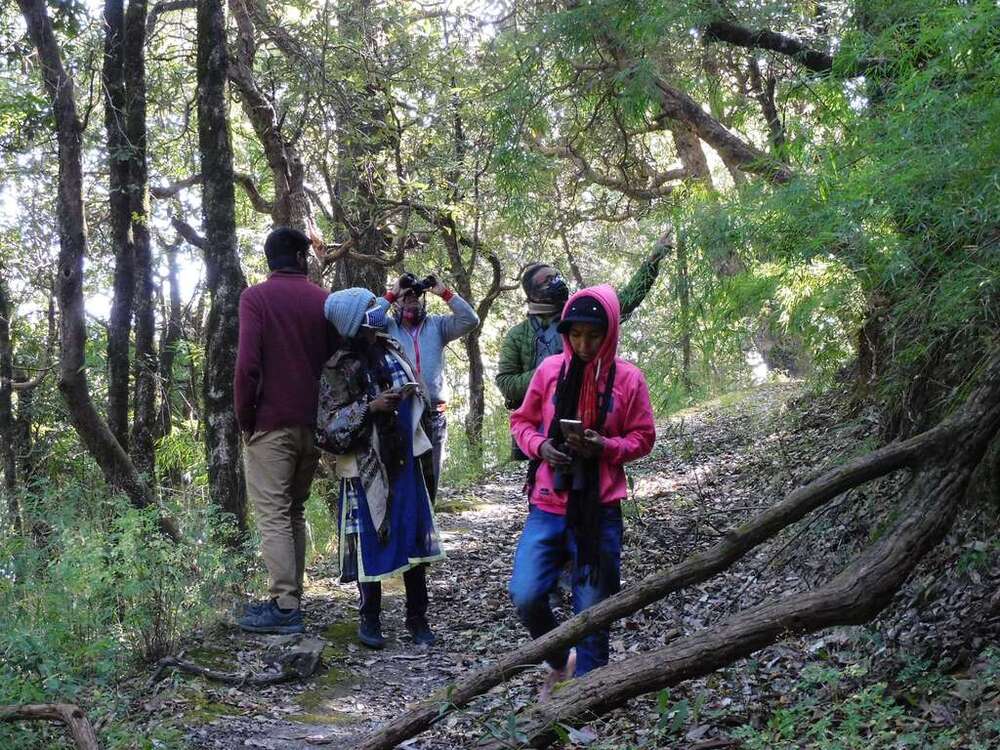
When and how did you get interested in bird/nature education?
I was fortunate to grow up in areas near nature due to a services background, which also provided many opportunities to explore the outdoors. Travels with family to diverse landscapes such as the Western Ghats and the Himalayas sparked my curiosity about nature, while reading books and watching TV shows featuring naturalists like Gerald Durrell and David Attenborough had a significant impact on me at a young age. However, as a professional working in remote Himalayan villages, I learned a great deal from colleagues, visiting scholars, and nature enthusiasts, as well as the communities inhabiting some very wild landscapes.
As a community mobilizer, effective communication and information exchange are a big part of my job. Since 2006, I have worked as a natural history educator, first with Himal Prakriti and later as an independent educator. I have had the opportunity to work with diverse groups of people, including nature guides, local, national, and international student groups, scientists, photographers, tourists, and participants in nature festivals.
My interest in nature education is more than a passion; it is everything. The complexity and awe-inspiring beauty of nature, combined with the politics and slow violence against it, drive my passion for educating others about the natural world. My love of nature has only grown stronger through my work as a nature educator.
What do you hope to achieve through your education work?
First and foremost, we must instil an unbridled, pure joy for the natural world around us, Nature is a never-ending, always open library of knowledge, it is everywhere, anytime. If one can share the joy of being in nature, learning from nature, it will be something that is always present.
On a more studied note, we are in the midst of a deep and desperate ecological crisis. Decades of mainstream education and unhinged capitalism have left us with policies and economic structures where people and systems have less empathy, and have lost the ability to see the intrinsic necessity of a stable and secure natural ecosystem.
My very tiny hope is that with a better understanding of nature, and the influences of natural ecosystems on everyday life, maybe in the very near future, people who have been exposed to natural history and climate change education will be able to guide decision making that considers nature to be at the core of our beings and the essential element for humanity’s survival.
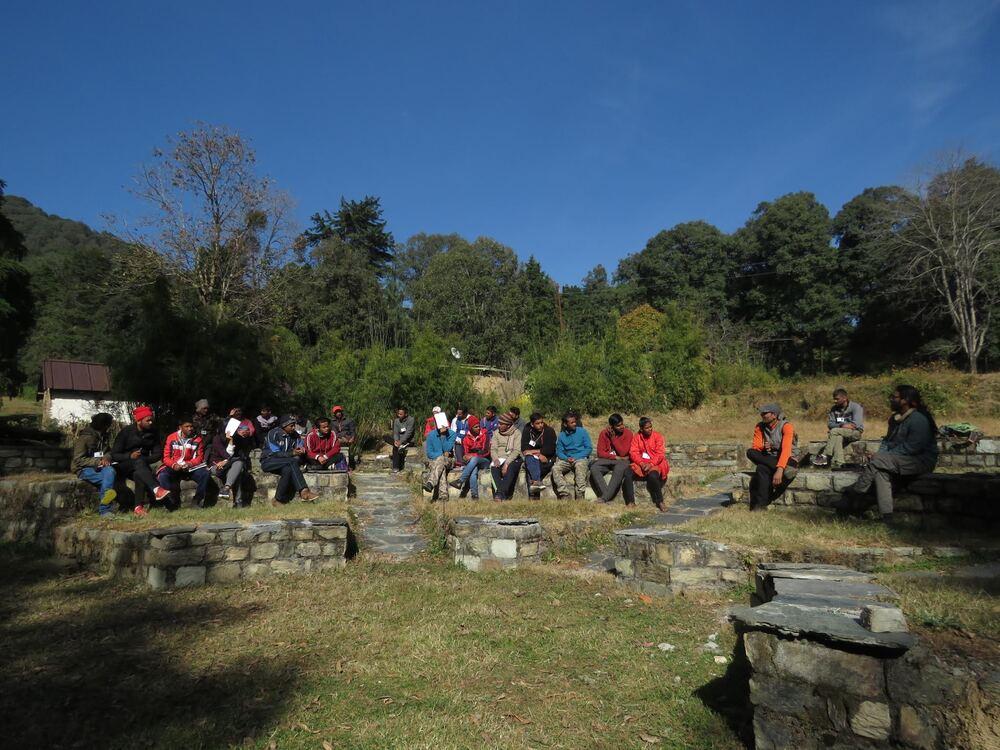
Maheskhan, Nainital, Uttarakhand
Why do you believe it is important for children to learn about birds or connect with nature?
The cliché, which is true, is that children are the future. This may be dark, but I think that if the children of today have to have a wholesome future, they need to know now what their deep connection with nature is and how they can help preserve earth, its diversity of life, and its myriad natural ecosystems. For that, we have to share, get them to come out and be in nature, play with nature so much that it is part of who they are, and guide what they eventually do. Of course, there is also the fact that younger people are more impressionable, and connecting them with nature offers the opportunity to inculcate a longstanding appreciation, love, and empathy for nature.
I want to say here that much of the talk about humans and their connection to nature is pure human selfishness. Without humans, nature will exist in some form or another, so when we talk about conservation, protection of nature, etc., it is with the selfish motive that the earth be in a state suitable for the survival and well being of humankind.
What tools or resources have helped you in teaching about birds? Can you describe an approach that has worked exceptionally well for you?
I have mostly worked with youth, adults, and children through out-of-school and non-formal programs that prioritise time spent in nature. My approach begins with walking along trails, observing birds and other natural elements, and providing people with binoculars, pocket guides and writing / drawing material for a more immersive experience. I often use materials such as Early Bird India’s pocket guides and Flashcards, and bilingual booklets about birds, butterflies, and moths that I helped produce with groups I work with . My techniques combine activities from other curricula with those found in the Early Bird’s ‘Handbook for Bird Educators’ and SeasonWatch’s materials, along with storytelling.
For underprivileged youth and adults, one-on-one mentoring, repetition, task-oriented activities, and online tools like Merlin, eBird, and iNaturalist are effective. I provide small fellowships that offer honorariums, natural history materials, binoculars (rarely cameras), and regular mentoring, as well as exposure trips and interactions with experts and scientists. For young students, play-based activities and time spent in a safe outdoor environment are encouraged. Creative expression, storytelling, and imaginative exploration of nature are incorporated into both groups’ approaches.
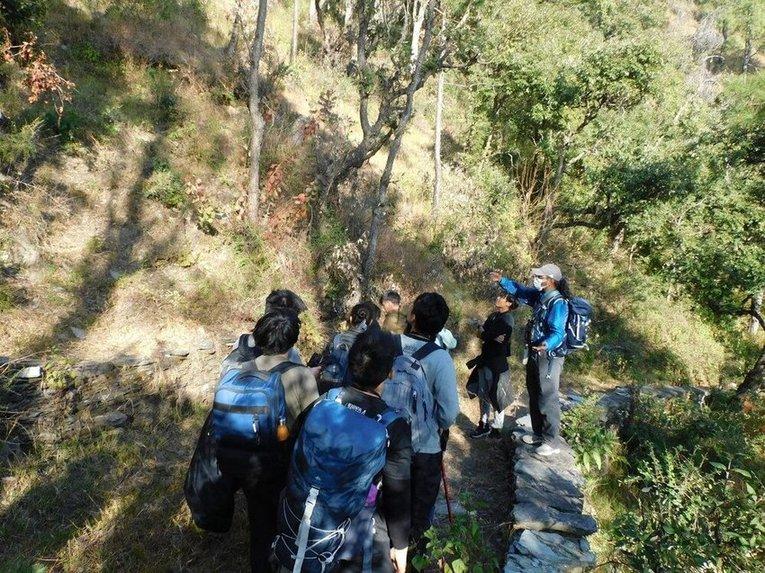
Have you encountered a significant challenge as a bird/nature educator, how did you overcome it?
Working with individuals from remote, rural, and less privileged communities presents several challenges for natural history educators. The lack of good natural history material and tools, coupled with economic burdens restrict the amount of time individuals can devote to learning. While some support can come from nature guide training programs, and resources from family, and friends, it is often not enough. Additionally, the lack of vernacular natural history materials is a pressing issue. Efforts are being made to translate text pieces and presentations, and produce bilingual nature guides, but more work needs to be done.
The rural education system, which focuses on rote learning and ignores local knowledge, exacerbates the education gap. Poor comprehension, reading, and abysmal basic science and geography knowledge make it difficult for individuals to learn about natural history. Furthermore, there is a critical lack of involvement of girls and women from rural areas in birding and natural history activities. The absence of women natural historian role models in rural Himalayas, inadequate understanding of economic pressure on girls and women, and the lack of secure and accommodating structures all contribute to this issue. Efforts are being made to bridge these gaps and provide opportunities for girls and women to get involved in natural history and birding activities.
Do share any memorable moment or experience you have had in teaching kids about birds/nature. Can you recall any insightful instance that shaped your perspective?
As a natural history educator, I’ve had some nice experiences. Here are two of them:
During Monsoon Beauty ‘22, a citizen science event, I mentored two young men who took children on nature walks. One of the activities involved searching for insects or eggs on plants and bushes and drawing them in their notebooks. The boys were so interested and happy that they would come and request ki aur nature wala homework chaahiye (कि और नेचर वाला होमवर्क चाहिये – give us more nature-related homework) . This experience taught me that creative and engaging activities can ignite children’s curiosity about nature.
In my village, every few years a new bunch of kids go hunting for birds, almost as a rite of passage. Instead of catching and reprimanding them, I found that interacting with them was more effective. By chatting, sharing photos, bird guides and organising nature walks, I am able to steer them away from hunting and foster their appreciation for nature. Some of these children have become our best allies against regular hunters, and many of them participate in our village’s annual nature and forest festival.
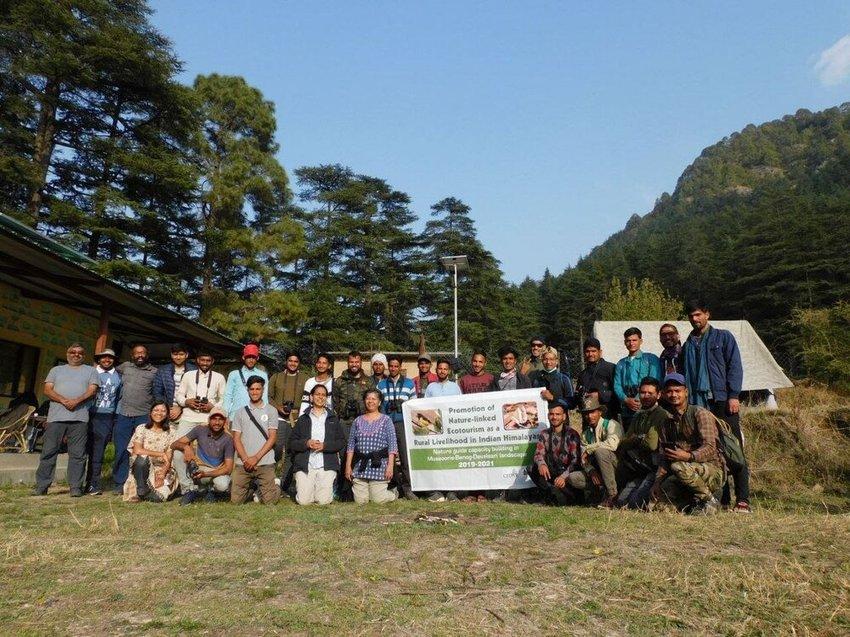
Have you noticed any changes in your learners after they received exposure to birds and nature-based learning? If yes, what are they? If not, why do you think that is?
In rural areas, people have a natural tendency to observe their surroundings. However, the opportunity and environment to learn about what they observe is often lacking. If they are provided with a way to connect what they see with what it is, how to describe it and where to learn more, they will be able to share and enhance joint learning. Once they start observing and self-learning, they begin to see the diversity of nature and start connecting the pieces of the puzzle.
In particular, we have seen positive changes in school-going girls and their families. Despite the conservative and protective nature of rural society, we have created a secure environment and built trust, providing economic and material support. As a result, these girls have become more confident and are now role models for other girls and young women in their community. They are even able to work as natural history guides, sharing their knowledge and engaging visitors.
Overall, I feel that our efforts have helped awaken curiosity and encourage critical thinking. By connecting people to their environment and helping them learn about the natural world, we are fostering a greater appreciation for the beauty and diversity of nature.
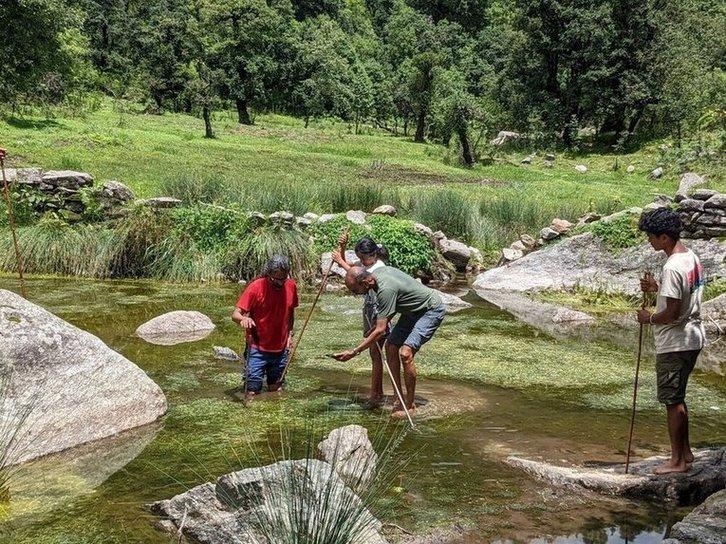
What message would you have for your fellow educators, or somebody starting out in their nature education journey?
First is nature is everywhere, one just has to take the time to look. It’s not necessary to visit a “wild” area to start observing and learning. While some places may be more diverse and enchanting than others, people will likely appreciate knowing what is around them every day. Once they start observing the ordinary, the extraordinary will often show up as well.
When working with younger groups, it’s important to keep them engaged through play and patience. It’s also essential to be flexible and willing to explore other activities if the original plan doesn’t work out. Preparation is key, so visiting trails before events and going over plans with one’s team is important and respectful of people’s time.
Finally, patience and repetition are crucial. Answering the same questions multiple times or revisiting the same place can be valuable. Leading young people from the known to the unknown and seeing surprises emerge in the same places visited earlier provide valuable insights and appreciation for the dynamic and exciting nature of the environment.

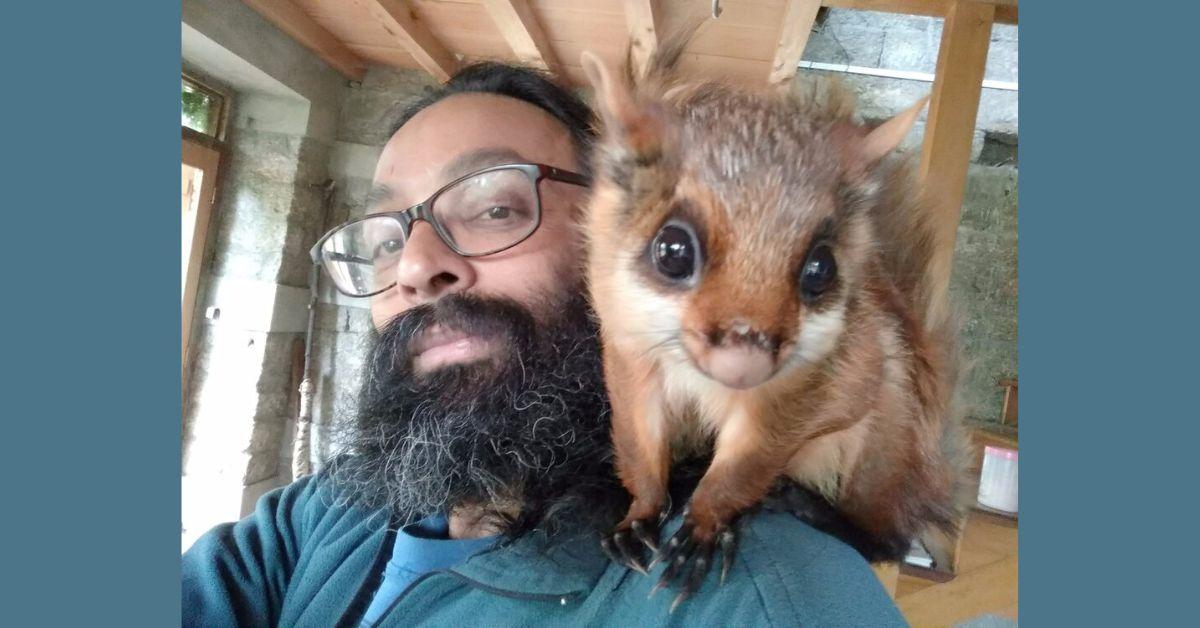
Wonderful work. Even though am in my seventies my love for nature and its beings have been rekindled. I watch every bud in my flowering plants and the butterflies and birds which dart in and out with a fresh pair of eyes. Thank you for this.
well thought through questions has brought out the best in Ram’s answers.
wonderful.
Seeing your passion and love for nature has also helped me in becoming aware of my surroundings. I now look at every bud on my flowering plants and see how beautifully it blooms…I look at the small tiny insects hovering near the plants to get their nourishment. I am hoping to see bees and butterflies hovering around the colourful blooms though we are in the midst of a city!!Thank you for putting me on this wonderful journey.
Enjoyed reading the article about climate educator and scientist Ramnarayan K. It is inspiring to read about his work in the villages and urban/rural communities to deepen the connection between humans and nature with a focus on positive action. Documenting diversity, be it birds, plants, or trees, and teaching other young kids to do the same in a fun, curious, and interactive way will nurture a new generation of environment and nature guardians. This work needs to be supported and amplified.